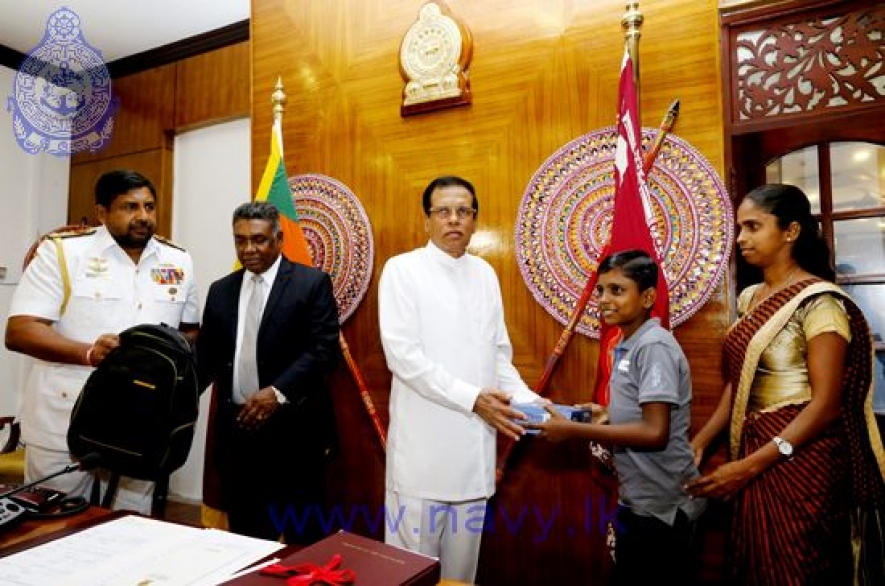The fifth phase of the distribution of 275 Thalassemia Infusion Systems took place today to coincide with the Thalassemia Day which falls on May 11. Five children received the infusion systems from the President in addition to the distribution to the Children's Hospital.
Secretary to the Ministry of Defense, Karunasena Hettiarachchi, the Director of the Lady Ridgeway Hospital for Children, Dr. Rathnasiri A Hewage, the Commander of the Navy, Vice Admiral Ravindra Wijegunaratne, the Director General Health Services of the Navy, Rear Admiral Lalith Ekanayake also attended the event.
According to the Navy, The Infusion System is essential for Thalassemia patients to remove the excess iron deposits in vital organs as a result of frequent blood transfusions which are needed for the treatment of the disease. When the treatment is given it is necessary to give the right dose for a period of 8-10 hours. However this is practically a very difficult task in hospitals. The Infusion System was invented by the Sri Lanka Navy in 2010 in view of minimizing those inconveniences. At the time Thalassemia Infusion System cost around Rs. 80,000 to Rs. 150,000 and its battery life was not so durable.
Due to those contractions and difficulty of upgrading in case of failure in the system, the whole system needed to be replaced. However overcoming all the constraints the Navys Research and Development Unit was able to develop a new infusion pump which was manufactured at a relatively low cost of about Rs.5,500. Further utilizing their expertise and know how, the Research and Development Unit of the Navy improved the standard of the infusion pump to a higher level and it is now being used under the Health Ministry guidelines in Government hospitals. In 2012 the system won the Engineering Excellence Award from the Institution of Engineers of Sri Lanka for its manufacturing excellence.
The production of Thalassemia Infusion Systems is carried out under the direct supervision of the Commander of the Navy and 1,200 infusion pumps have been distributed under 5 phases across government hospitals and childrens hospitals thus far. Further the Navy is continued to produce the infusion pumps to meet the total requirement of the nation.



















